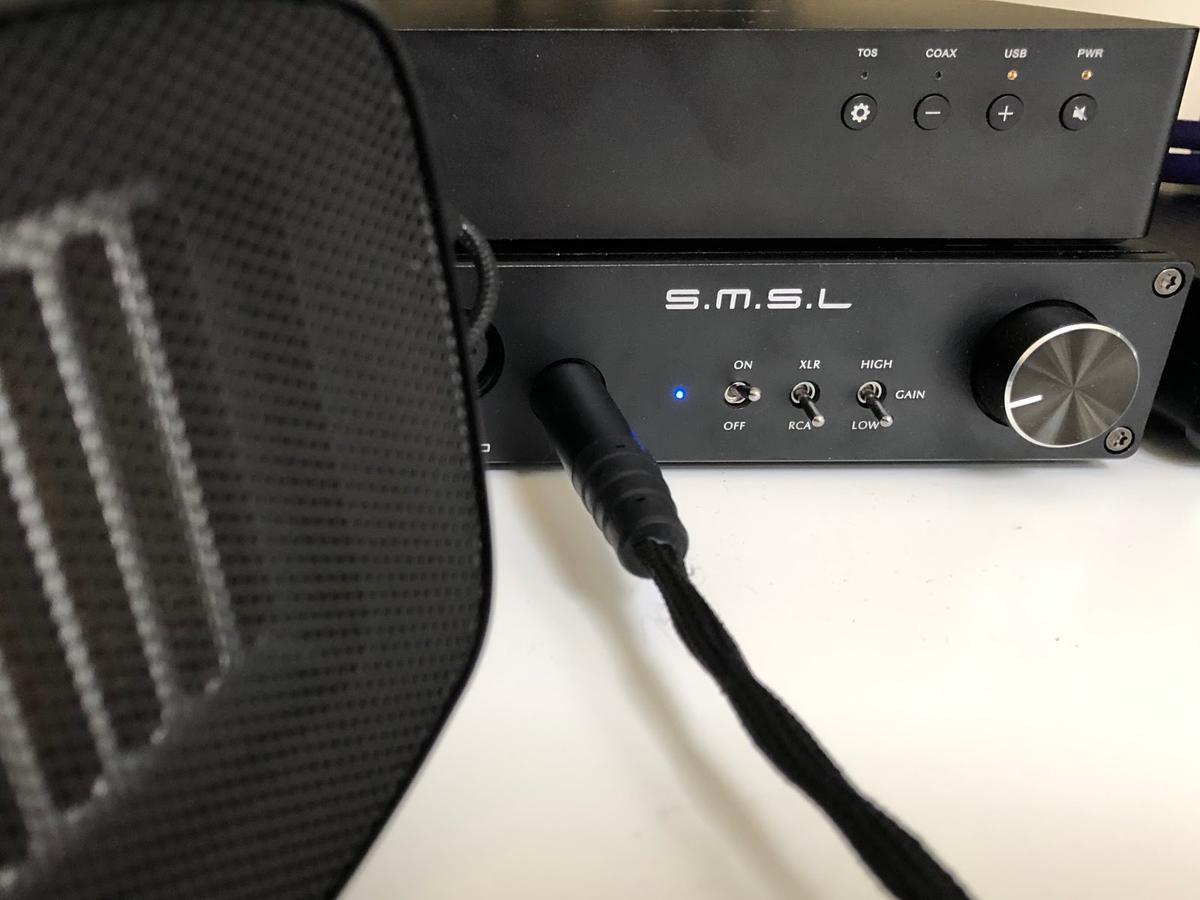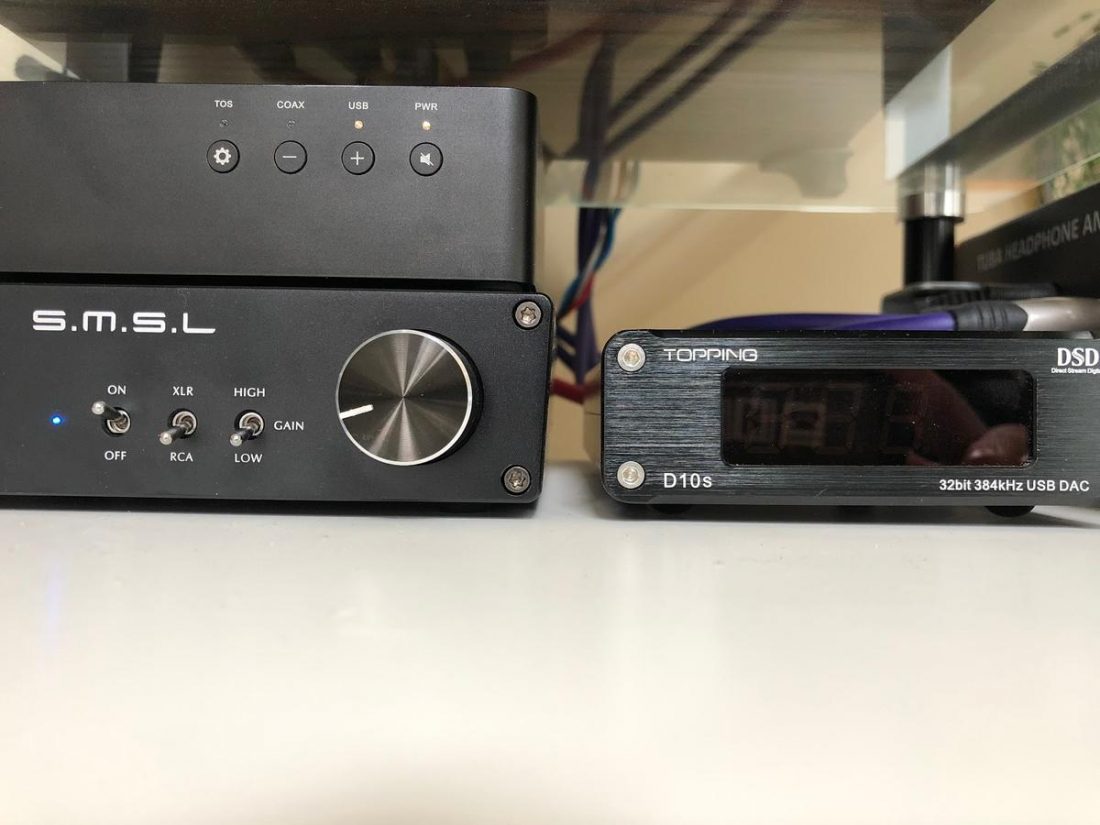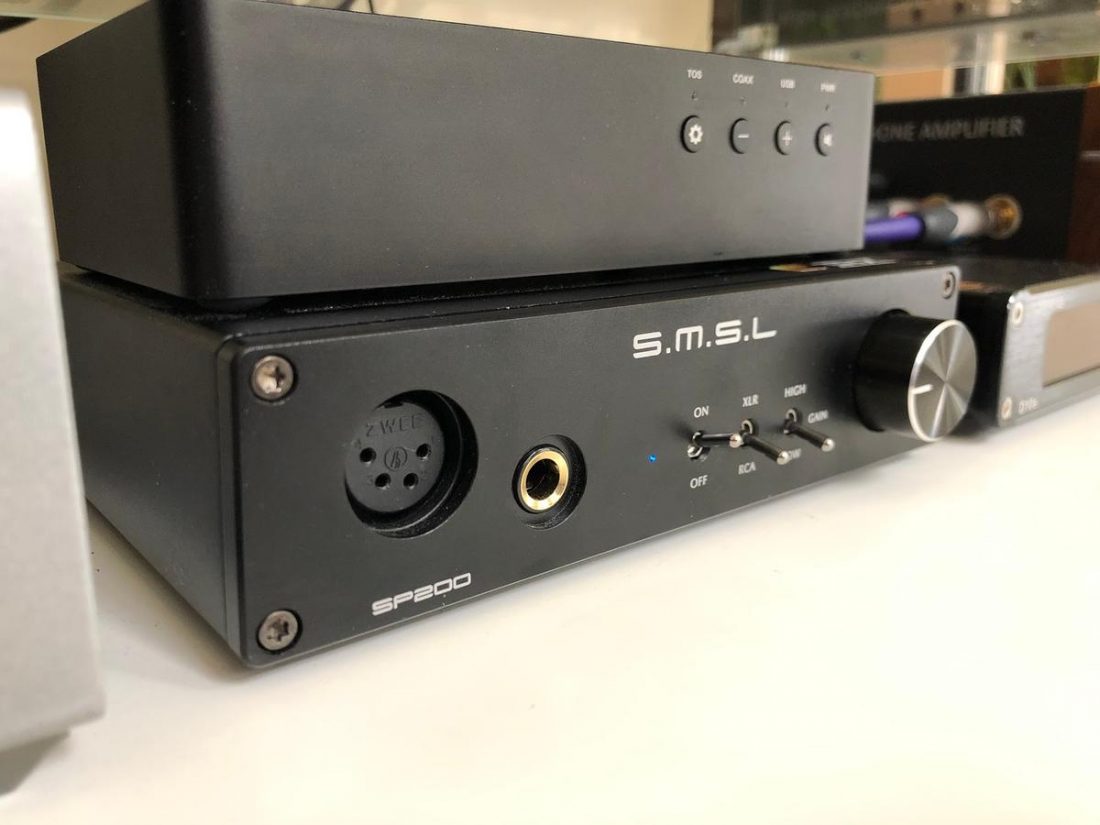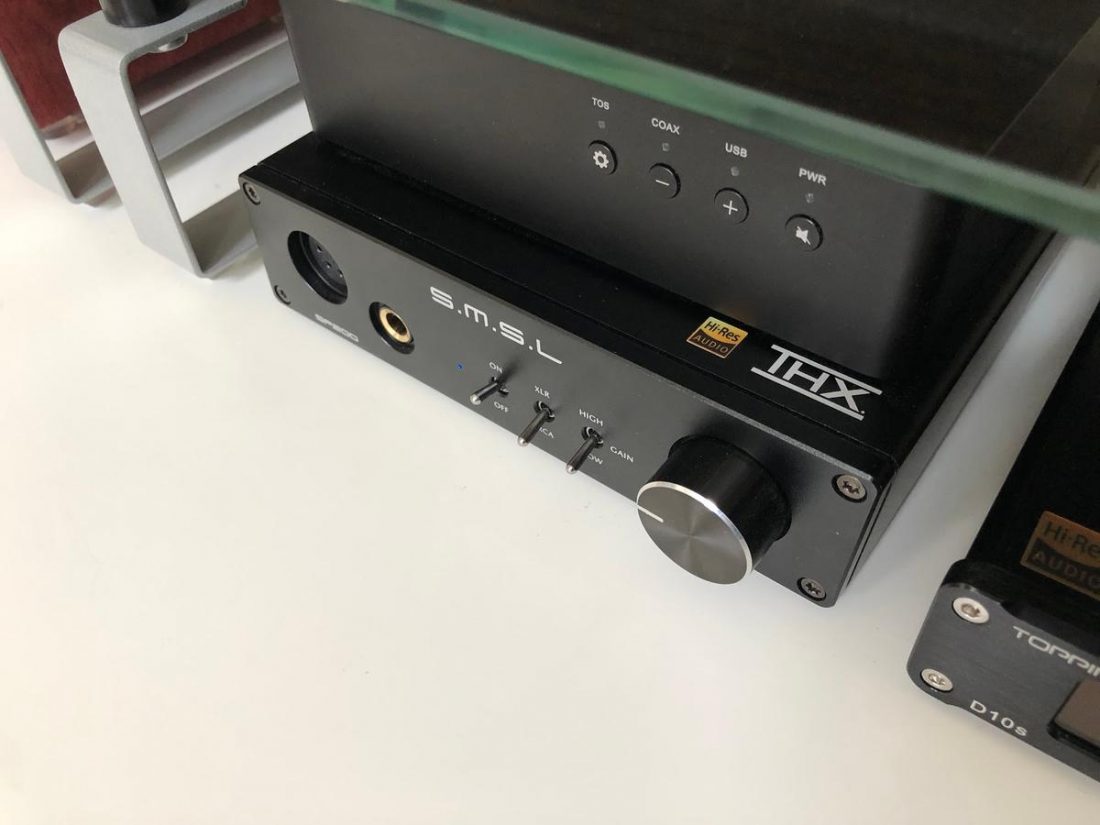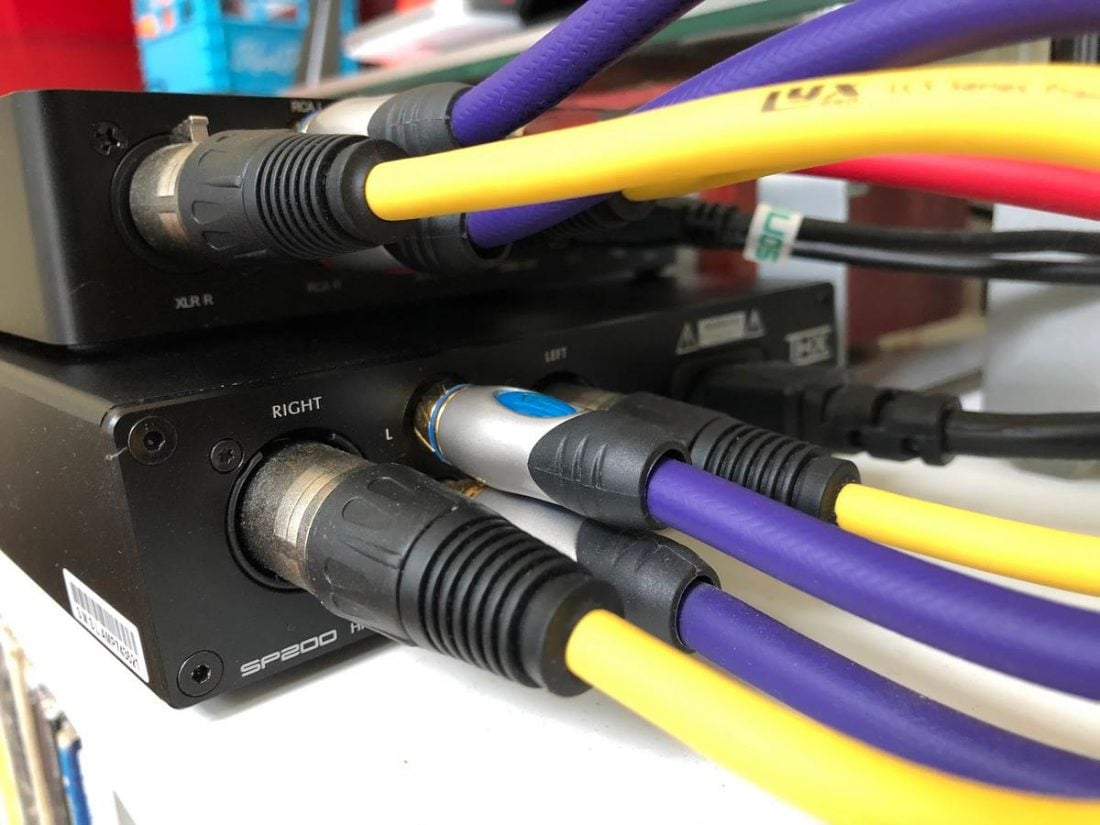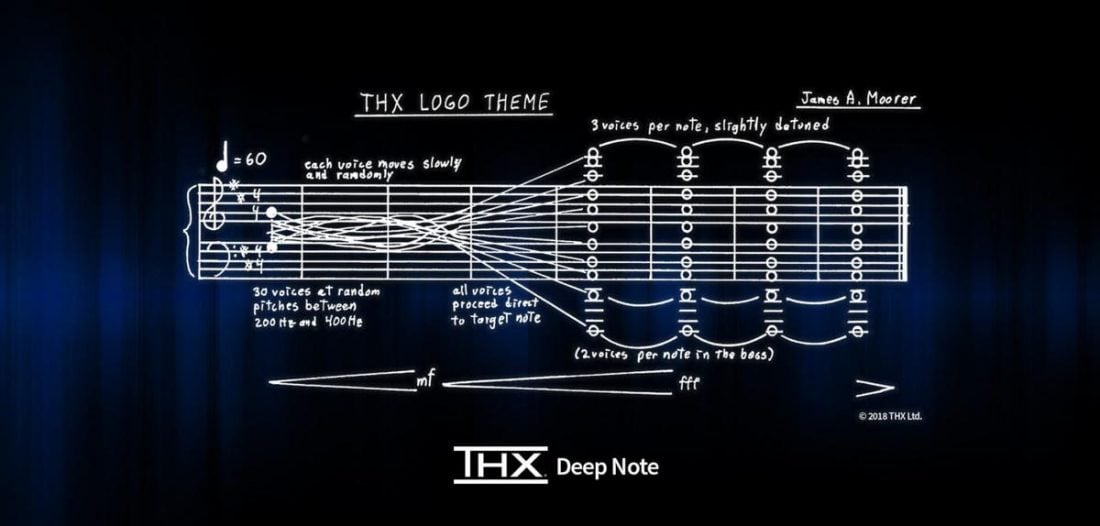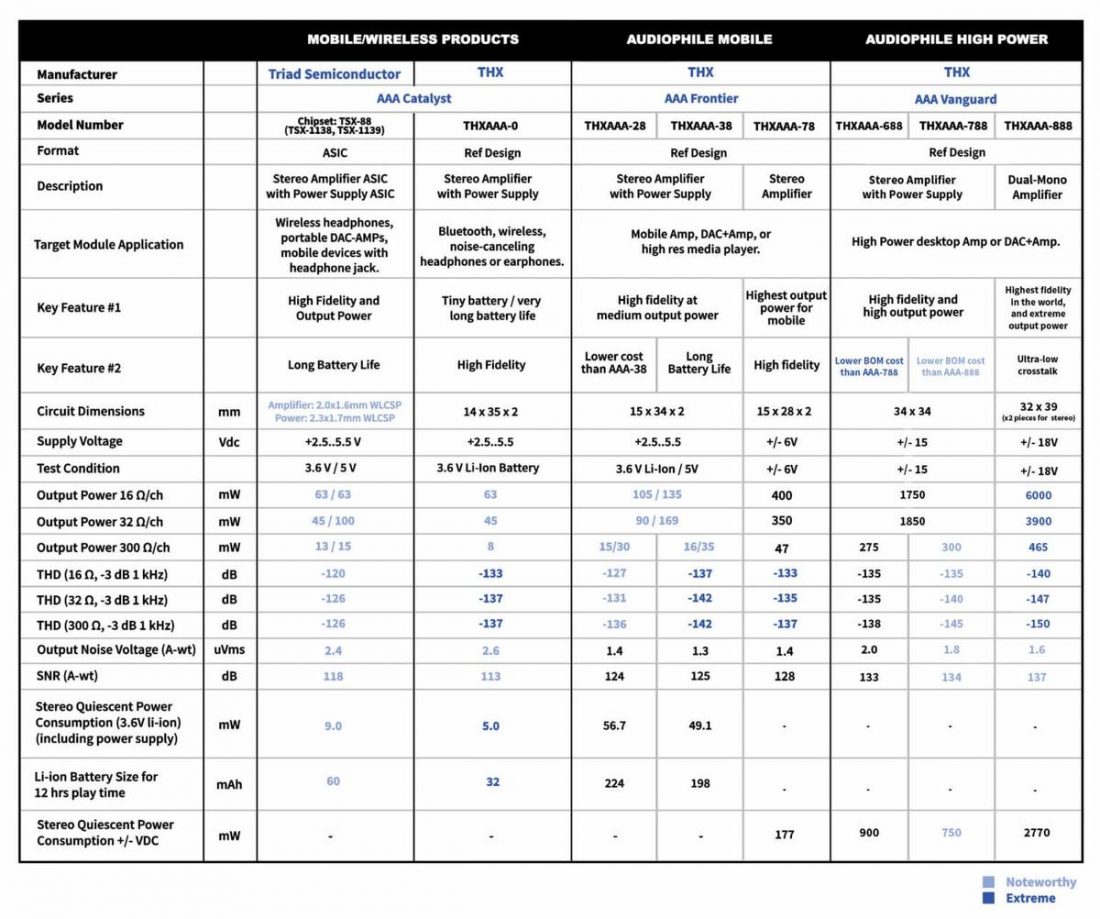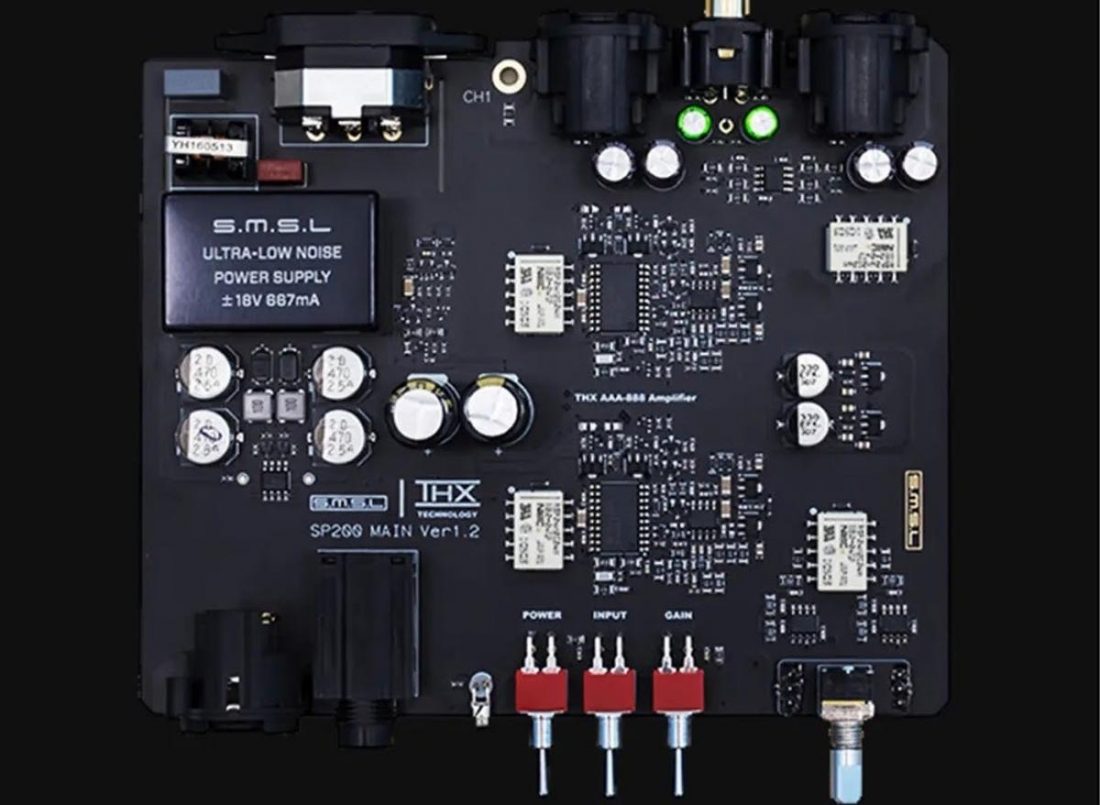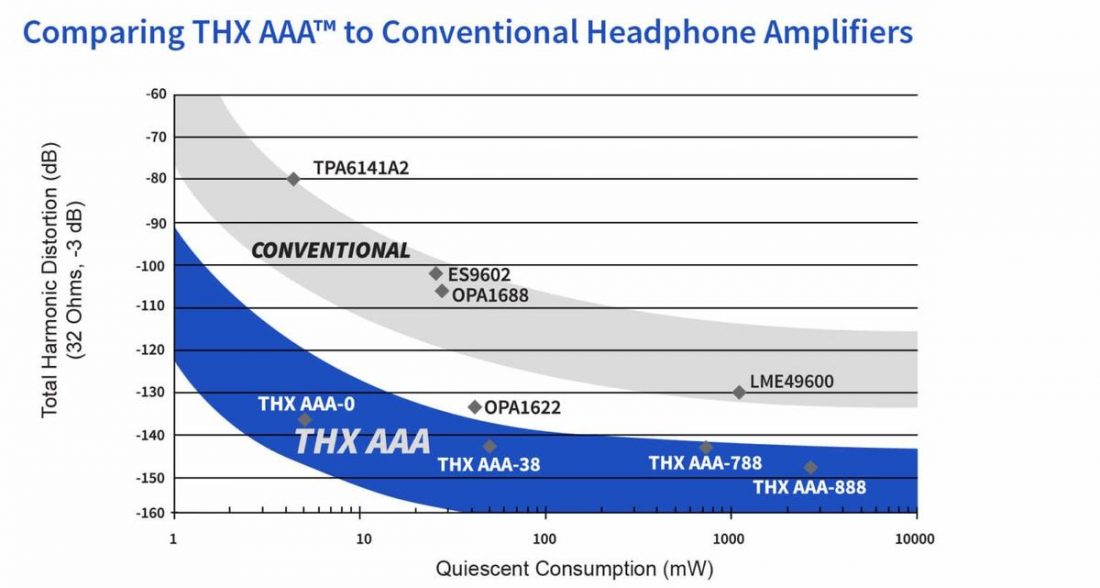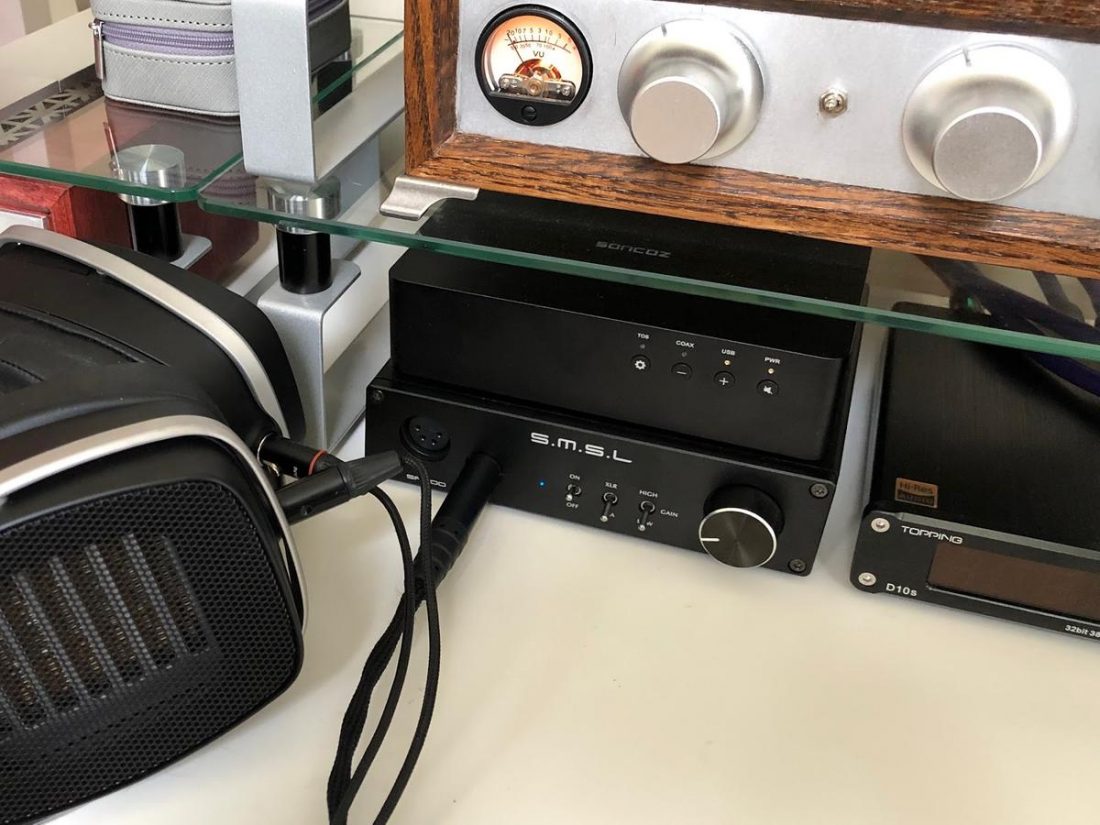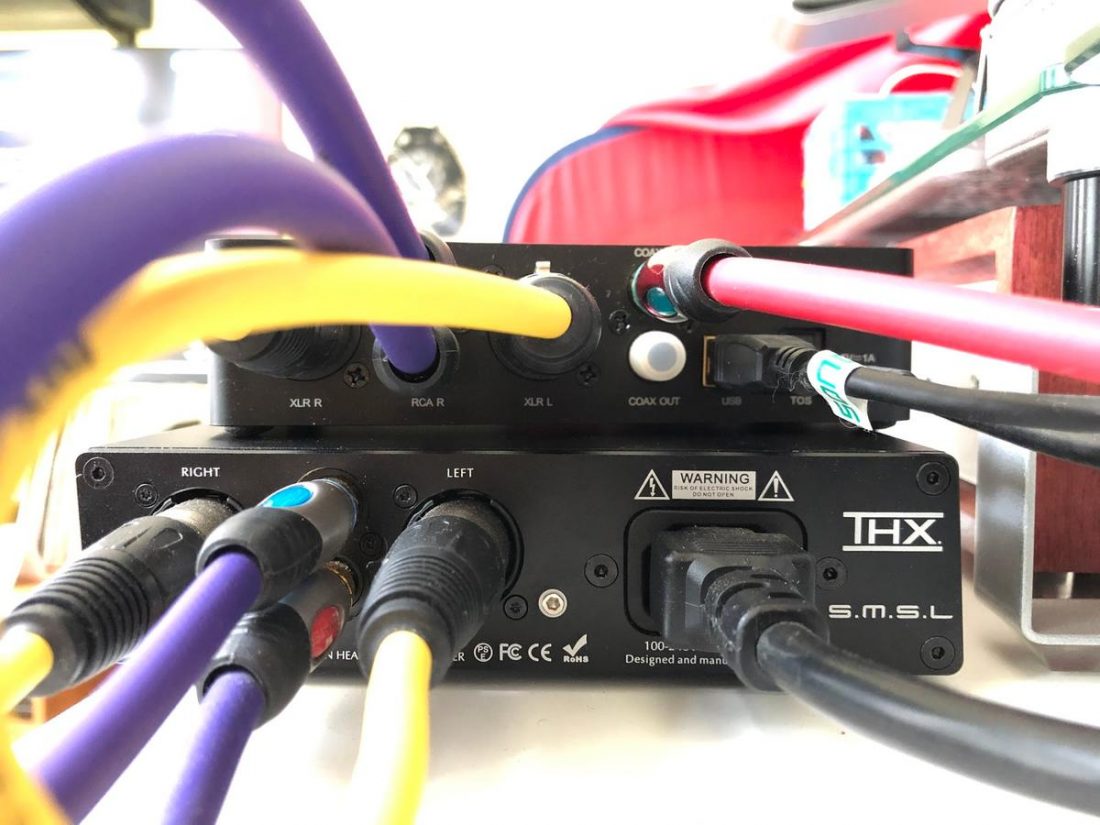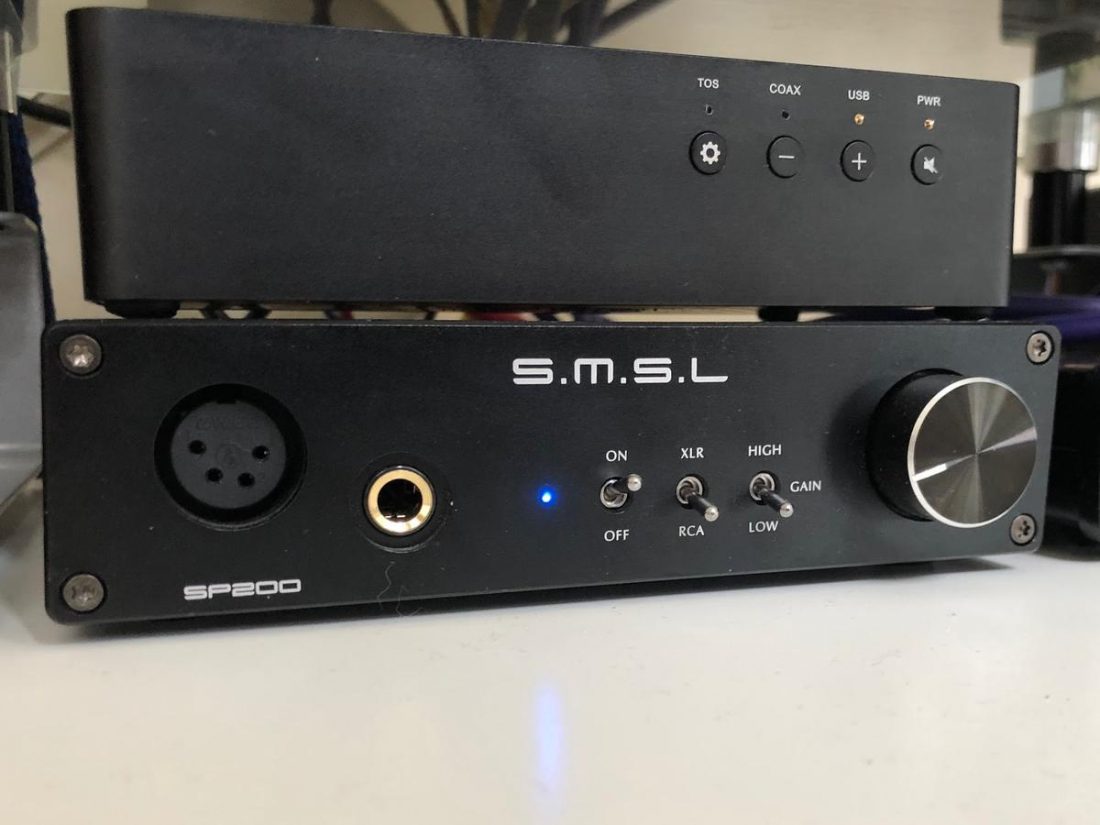Well. I know what you are thinking. It’s about time that Headphonesty reviewed a THX amplifier. After all, 2019 saw the release of several interesting headphone amplifiers bearing the famous THX name. Each was heralded as providing the cleanest measurable amplifier signal available at various price points and with differing THX circuitry implementation. The trifecta of ultra-low distortion, no coloration, and high output power. What’s not to love? The THX amps were purported to be real game-changers, and (at the time), there was a ton of hype about them all. But the excitement has seemed to drop off over the last year, and few new THX amplifiers have been released. Other non-THX branded amplifiers have become the current measurement darlings. While not the first announced, the SMSL SP200 THX AAA 888 amplifier initially garnered a lot of interest when released in Q4 2019 due to its combination of low price (release price $290, currently $265) and featuring the highest level of THX amplifier circuitry (AAA 888). Its two direct competitors both cost more at that time, the Drop + THX AAA 789 amplifier (now $299) and the Monolith by Monoprice THX AAA 788 amplifier (now $499), and featured lesser THX implementations (AAA 788 and 789). A couple of controversial factors kept folks talking about the SP200 after its release. The subtle slanted parallelogram front panel design, rather than a traditional 90-degree rectangle, is one of those ‘love it or hate it’ design decisions. And while the SP200 features dual XLR balanced inputs and a 4-pin XLR headphone cable jack, the internal circuitry was revealed not to be genuinely ‘balanced.’ The single-ended 6.35mm headphone socket provides the same output as the XLR one. Even so, the SMSL SP200 was a contender for the best value headphone product of 2019. But, is it still worth considering more than a year later? Do those excellent measurements result in excellent sound, or is this amp good on paper only?
Company Overview
SMSL stands for the Foshan ShuangMuSanLin Technology Co., Ltd. Founded in 2009, SMSL is located in Shenzhen, China. They have their own R&D, manufacturing, and marketing teams, and specialize in producing audio products, including DACs, stereo headphone amplifiers, speakers, and power amplifiers. S.M.S.L has established a comprehensive sales network, and their products are exported to more than 30 countries worldwide. SMSL states that they are “quality-based, technology-guidance, customer central.” They strictly execute the Electronics Industry rules (EICC) and have passed the CCC, BQB, MFi, CE, FCC, RoHS, CE-EMC, CE-LVD, WEEE certifications.
Technical Specifications
Price: USD $265 Form: Desktop headphone amplifier Inputs: Balanced x 1, Unbalanced x 1 Outputs: Balanced x 1, Unbalanced x 1 Output Power: 6W x 2 (16ohm), 3W x 2 (32ohm), 440mW x 2 (300ohm), 220mW x 2 (600ohm) SNR: 130dB, A-Weighted Output Noise: 2.8uV, A-Weighted THD+N: -122dB, 0.00007% (1kHz, 32ohm) THD+N: -117dB, 0.00013% (20 – 20kHz, 32ohm, -3dB) THD: -125dB, 0.00006% (1kHz, 16ohm, -3dB) Output Impedance: Near 0ohm Frequency Response: 0.1Hz – 500kHz(-3dB) Gain: Low(+6dB), High(+18dB) Power Supply Voltage/Frequency: AC100-240V, 50-60 Hz Power Consumption (EN60065): 24W Power Consumption in Standby Mode: < 0.1W Size: 160 x 149 x 73 mm Weight: 772g
Packaging
Budget-oriented and straightforward is the name of the game. The SP200 is an economical device, and the lack of included accessories reflects this choice. I purchased the SP200 (gently) used, so I didn’t receive the white logoed cardboard box.
In the box
SMSL SP200 THX AAA 888 headphone amplifier Power cable Specification card
Design
The SP200 is clearly designed to maximize consumer bang-for-the-buck. There are no niceties, only necessities with no cables included (other than a basic power cord). I’m okay with cutting extraneous features and addons if a product excels at doing what it is designed to do. The SP200 is a small but substantial, black, aluminum box. It visually differentiates itself from competitors due to the vertical angles being a few degrees off of 90. A slight lean to the right is an interesting design choice. It doesn’t bother me, and it’s not dramatic enough to be very noticeable for the most part. Although I’m sure, there are quite a few customers that curse the slightly incongruous looks when completing a standard component stack. The knob and analog volume potentiometer start to uncover the cost-cutting measures and just don’t have the weight and feel of a premium product. Conversely, the case is quite robust and heavy feeling and stays put even with a full complement of balanced and single-ended cable connections attached (especially with a DAC on top). Some of this weight is likely a result of the internal (class H) 24W power supply, which is unique from most devices around this price point which tend to use bulbous wall-warts. The features are pretty spartan as well. The SP200 lacks an EQ, display, remote control, preamp outputs, or internal DAC. The front panel is simple but functional with a bright blue power LED, dual headphone outputs, volume control, and three toggle switches for power, gain, and to select between the XLR balanced or RCA rear inputs. With extended use, the case becomes noticeably warm, although never to a distressing level.
Internals
A big claim to fame for the SP200 is the use of the dual-mono THX AAA 888 circuitry. If you are wondering (and somehow missed out on all the THX headphone amplification excitement), yes, it’s the same THX company that shows up before every new Star Wars movie. THX Ltd. is an audio and video certification and technology company located in San Francisco, California. George Lucas founded THX in 1983, and the Razer gaming peripheral company now owns it.
THX amplifiers
THX claims that they provide the “World’s Most Linear Amplifier Technology for Headphones.” THX AAA amplifier modules reduce distortion compared to standard headphone amplifier designs. THX supplies headphone amplifier manufacturers with flexible and modular solutions (including power supply) to incorporate into their amplifiers. THX provides off-the-shelf parts and circuit design requirements to the manufacturer. The manufacturer must then work with THX to meet their performance requirements and use the THX logo. This process differs from the typical THX ‘certification,’ which THX awards to companies that meet performance benchmarks but do not utilize THX provided circuitry. THX list the benefits of their Achromatic Audio Amplifier (AAA) circuitry as:
Reduction of harmonic, intermodulation, and crossover distortion by up to 40dB, resulting in a realistic and fatigue-free listening experience Enables maximum output power for greater dynamic range and sound pressure level (SPL) Minimal bias current and highly efficient power management to optimize and extend device battery life Scalability that allows incorporation into any headphone or in-vehicle amplifier design, with the flexibility to match the required fidelity, output power, and price point
The THX AAA 888 version (utilized in the SP200) is the TOTL implementation (over the 688, 788, and 789 versions). THX lists the 888 as a dual-mono amplifier, with the “highest fidelity in the world,” “extreme power output,” and “ultra-low crosstalk.” With an output impedance near 0ohms and a power output of 3.9W @32ohms, the SP200 is not a typical budget amplifier.
Balanced or not?
Did you notice that the SP200 power rating is not differentiated between the single-ended and balanced outputs? That’s markedly different from most ‘balanced’ amplifiers that characteristically list twice the output power in balanced mode. The key here is semantics. ‘Dual-mono’ rather than ‘balanced.’ The board uses two opa1612 op-amps to convert the XLR unbalanced signal to feed the opa564 amplifier op-amps, so purists are quick to point out that the SP200 is not truly a ‘balanced’ amplifier. This design, and the inclusion of front and rear XLR sockets, has led to market (and marketing) confusion, with some buyers feeling mislead. The potential benefits of a balanced amplifier design are more than covered by the THX 888 circuitry. Low noise? Check. High power? Check. Minimal distortion? Check. Negligible crosstalk? Check. Unlike the front panel connections, the amplifier does sound different depending on which rear panel input type is utilized. SMSL claims that “the RCA does not need to pass an XLR->RCA amplifier like the XLR input. Therefore, the performance of the RCA input is the best.” The only real benefits of using the rear panel XLR connections are to remove unwanted noise or ground loop hum. What is immediately noticeable when using the XLR rather than the RCA inputs is a pronounced increase in output volume. Depending on your headphone sensitivity, this may be undesirable, as it further reduces the arc of usable volume control. The THX amplifier design is based on active negative feedback to reduce measured distortion significantly. In a perfect world, measurements would accurately portray a product’s absolute performance. But as many tube amp fans will tell you, measurements are done with test tones (and not with actual music), and there is no replacement for using your ears to determine how something sounds.
SMSL SP200 Sound
For the most part, the SP200 delivers on what it promises. It provides a potent and clean signal. If ‘musicality’ or warm-sounding harmonics are your thing, then the SP200 may not suit your tastes. It comes across as effortless and transparent, but much more on the clinical and dry side of amplification. Detractors of the SP200 state that it simply isn’t ‘special’ and has no ‘wow’ factor other than a high-power output. This feeling may be due to it being a transparent amplifier that simply does not add to the signal. No tonality and no coloration. If you want your amplifier to improve your other components’ sound, then the SP200 isn’t the right choice. It provides plenty of clean and clear power that will reveal any weaknesses in your audio chain. Thankfully the SP200 has a remarkably low noise floor, so there is no hiss when using very sensitive IEMs at reasonable listening levels. However, the lack of a proper ‘low’ gain setting, combined with the SP200’s high-power output, means that the usable range of the volume potentiometer is limited with IEMs. Also, at the very lowest volume settings, some minimal channel imbalance can be heard. The SP200 has plenty of power for any of the full-sized headphones that I currently have on hand. From the Sennheiser HD650 to the Audeze LCD-2, and even with the upper-tier HEDDphone, all are driven effortlessly by the SP200. The individual characteristics of each of the headphones shine through and take center stage. I paired the SP200 with the Soncoz LA-QZD1, an excellent, comparably priced, and similarly clinical-sounding DAC that also excels at sonic measurements. This pairing meant I could test the performance of both the RCA and balanced connections. This combo also likely led my audio impressions to lean even more towards the clear and dry side of things.
Measurements
If you are interested in measurements, the good folks at AudioScienceReview.com had the following to say about the SP200:
Where to Buy
Conclusion
The SMSL THX AAA 888 SP200 is no longer the flavor-of-the-month headphone amplifier. New amplifiers from Topping seem to receive all the current “affordable with great measurements” hype. Has the world moved on, and the poor old SP200 is no longer relevant? …So SINAD which is signal over noise and distortion is really determined by noise level… As it is, the SP200 easily classifies as reference quality headphone amplifier… …In low gain, performance is neck and neck with Drop’s THX 789. It actually produces the same power as that unit despite use of low gain… Switching to high gain (blue) gives us even more power but comes at the cost of higher noise. Note that this test uses the volume control at maximum which you would not normally use. So the real life performance of high gain will be better than is shown… …Next I switched to Sennheiser HD650. Performance here in one word was superb… Needless to say, it is my absolute pleasure to recommend the SMSL SP200.” Without belaboring the point, should you still consider buying the SP200 in 2021? Yes, if you prefer your amplification honest and revealing, rather than smooth and musical. Or if you prefer your music true to the source, rather than hiding any sonic imperfections. Yes, if you are ok with potentially a colder, more sterile presentation, rather than one that is warm and engaging. And of course, if you consider measurements to be representative of sonic performance. At $265, the SMSL SP200 offers excellent value. Its technical and audio performance leaves little about which to complain. No, it’s not perfect. Some cost-cutting measures are lamentable, such as the lack of a true ‘low’ gain setting, pre-amp outputs, and an imperfect volume control. Other nice-to-haves (such as a display or remote control) are acceptable to be missing at this price point. The SP200 appeals to my no-nonsense and bang-for-the-buck sensibilities. It is a clean sounding performer that provides plenty of power for almost any pair of headphones. In the end, it still delivers on all the essential promises necessary for a great headphone amp.
